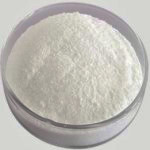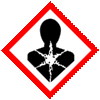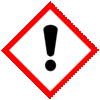 |
King of Chemicals Manufacturers |
Specifications, Properties, Uses, SDS of Sodium Butyrate USP Grade, CAS Number 156-54-7 & Encapsulated Sodium Butyrate Manufacturer Supplier Exporter Wholesale & Small Packs. |
|
| King of Chemicals has several associated companies having accreditations like cGMP, GLP - FDA Approved Good Manufacturing Practice and Good Laboratory Practice of WHO standard, ISO-9001, ISO-14001, ISO/IEC 17025, ISO ISO-45000, HACCP, FSSC 220000, FSSAI, "REACH" Registered, Kosher & Halal Certified. e-CTD and DMF support can be made available if needed. We offer USP NF BP Ph Eur EP IP JP Analytical Reagent FCC Food Grade Chemicals & Nutraceuticals. | |
        |
|
Muby Chem Pvt. Ltd. is a several decades old group of companies, engaged in manufacturing, supplying, distributing, wholesale supplies of Sodium Butyrate for actual users, including retail or small pack supplies for research and development work.
We supply fine and speciality chemicals, pharmaceutical excipients, mineral fortifiers in chemically pure, analytical reagent grade, IP BP USP Ph Eur EP JP and other pharmaceutical grade monograph including FCC Food grade chemicals and Nutraceuticals at best prices. We and/or our associated units have all the facilities to supply as per cGMP standard observing good manufacturing practice and good laboratory practice. We can assure low microbial count and also offer a test certificate for the same. We maintain warehouses across USA, India, and UAE. Our group exports to USA, Canada, Mexico, Argentina, Brazil, Chile, Korea, Malaysia, Thailand, Indonesia, Europe, and several other parts of the world. We supply in wholesale container loads to small pack of few grams. Solid products may be specified for it size and shape as desired by the buyer.









Sodium Butyrate CAS Number 156-54-7
For Properties Specifications Uses of Sodium Butyrate & Encapsulated Sodium Butyrate Click Properties, Specifications, Uses, Price, Process of Sodium Butyrate &r Encapsulated Sodium Butyrate Manufacturer.
For For SDS MSDS Sheet of Sodium Butyrate Click SDS Safety Data Sheet MSDS Sheet of Sodium Butyrate Manufacturer.
The Properties, Specifications, Monograph and Uses of Sodium Butyrate & Encapsulated Sodium Butyrate:
Sodium Butyrate CAS Number 156-54-7, EINECS EC Number 205-857-6, HS Code 29163990 or 29156000, Molecular Weight 110.09, Chemical Formula CH3CH2CH2COONa
Sodium butyrate is a compound with formula Na(C3H7COO). It is the sodium salt of butyric acid. It has various effects on cultured mammalian cells including inhibition of proliferation, induction of differentiation and induction or repression of gene expression. Sodium butyrate is the product that energy nutrition adjusts technology of intestinal mucosa. It can promote the growth of beneficial bacteria Lactobacillus, bifidobacterium and inhibit the growth of harmful bacteria Coliform in the gastrointestinal tract. It is used to improve animal immune status. Sodium butyrate can improve the health and growth performance of animals and increase economic benefits for farmers. It can significantly increase feed intake and reduce pH value of gastrointestinal tract. The effect is obvious that inhibits harmful bacteria and promotes the growth of animal. It is used as a feed additive for porket, growing pig, layer, meat chicken, fish, and other animals.
We also manufacture Micro-Encapsulated Sodium Butyrate, having core of Sodium Butyrate and coating of vegetable oil or mono and diglycerides or as desired by the buyer. Encapsulation will make it slow release or extended release.
Please visit Micro-encapsulated Sodium Butyrate
Specifications of Sodium Butyrate USP Grade
C4H7NaO2 -- 110.10
Butyric acid, sodium salt.
CAS 156-54-7
Sodium Butyrate contains not less than 98.0 percent and not more than 101.0 percent of C4H7NaO2, calculated on the anhydrous basis.
Identification:
A: Infrared Absorption on the undried specimen.
B: A solution (1 in 10) meets the requirements of the tests for Sodium..
Alkalinity: Dissolve 2.0 g in 20 mL of water, and add 1 drop of phenolphthalein TS: if a pink color is produced, it is discharged by 0.50 mL of 0.10 N sulfuric acid.
Water: not more than 1.0%.
Heavy metals: 0.001%.
Assay: Dissolve about 200 mg of Sodium Butyrate, accurately weighed, in 50 mL of glacial acetic acid. Add 1 drop of crystal violet TS, and titrate with 0.1 N perchloric acid to a green endpoint. Perform a blank determination, and make any necessary correction. Each mL of 0.1 N perchloric acid is equivalent to 11.01 mg of C4H7NaO2.
The MSDS-SDS Hazard Statement of Sodium Butyrate:
Sodium Butyrate SDS Safety Data Sheet
MSDS, Material Safety Data Sheet 05-Jul-21
1. Product Identification
Product Name & Other Names: Sodium butyrate; Sodium butanoate; Butyric acid sodium salt.
CAS No.: 156-54-7
EINECS EC Number: 205-857-6
Molecular Weight: 110.09
Chemical Formula: CH3CH2CH2COOHNa
Relevant uses and uses advised against (if any): Industrial Manufacturing.
Suppliers: As per letterhead.
2. Hazards Identification
GHS, Globally Harmonized System Classification in accordance with 29 CFR 1910
Classification according to Regulation (EC) No 1272/2008
Skin corrosion/irritation Category 2, H315
Serious eye damage/eye irritation Category 2A, H319
Specific target organ toxicity, single exposure; Respiratory tract irritation Category 3, H335
Germ cell mutagenicity Category 2, H341
Labeling according to GHS & Regulation (EC) No 1272/2008
GHS Label Elements  Health Hazard |
GHS Label Elements |
Signal Word: Warning
Hazard statements:
H315 Causes skin irritation.
H319 Causes serious eye irritation.
H335 May cause respiratory irritation.
H341 Suspected of causing genetic defects.
Precautionary statements:
P202: Do not handle until all safety precautions have been read and understood.
P261: Avoid breathing dust/fume/gas/mist/vapors/spray.
P264: Wash --- thoroughly after handling.
P280: Wear protective gloves/protective clothing/eye protection/face protection.
P281: Use personal protective equipment as required.
P302+P352 - IF ON SKIN: Wash with plenty of soap and water.
P332+313: If skin irritation occurs: Get medical advice/attention.
P304+P340: IF INHALED: Remove victim to fresh air and keep at rest in a position comfortable for breathing.
P305+P351+P338: IF IN EYES: Rinse cautiously with water for several minutes. Remove contact lenses, if present and easy to do. Continue rinsing.
P308+313: IF exposed or concerned: Get medical advice/attention.
P337+313: If eye irritation persists get medical advice/attention.
P405: Store locked up.
P501: Dispose of contents/container in accordance with local/regional/national/international regulations.
3. Composition/Information on Ingredients
Product Name & Other Names: Sodium butyrate; Sodium butanoate; Butyric acid sodium salt.
CAS No.: 156-54-7
EINECS EC Number: 205-857-6
4. First Aid Measures
Always seek medical attention after first aid measures are provided.
Inhalation: If Sodium Butyrate is inhaled, remove to fresh air. If breathing is difficult, give oxygen. Get medical attention.
Ingestion: Give large amounts of water to drink. Never give anything by mouth to an unconscious person. Get medical attention.
Skin Contact: In case of contact, immediately flush skin with plenty of water. Cover the irritated skin with an emollient. Remove contaminated clothing and shoes. Cold water may be used. Wash clothing & Shoes before reuse. Get medical attention.
Eye Contact: Check for and remove any contact lenses. In case of contact, immediately flush eyes with plenty of water for at least 15 minutes. Cold water may be used. Get medical attention.
5. Fire Fighting Measures
Fire: Not expected to be a fire hazard. However, it can burn at higher temperature.
Explosion: No information found.
Fire Extinguishing Media: Use any means suitable for extinguishing surrounding fire.
Special Information: In the event of a fire, wear full protective clothing and NIOSH-approved self-contained breathing apparatus with full face piece operated in the pressure demand or other positive pressure mode. At high temperatures under fire conditions, it may produce toxic or irritating fumes. Fire-extinguishing work is done from the windward and the suitable fire-extinguishing method according to the surrounding situation is used. Uninvolved persons should evacuate to a safe place.
6. Accidental Release Measures
Personal precautions, protective equipment, and emergency procedures: Ventilate area of leak or spill. Avoid breathing dust/fumes/gas/mist/vapors/spray. Use individual protective equipment (waterproof boots, suitable protective clothing, safety glasses, etc.). Restrict unprotected personnel from the area. Prevent any contact with hot surfaces. Do not approach facing the wind. Do not touch the spilled material.
Environmental precautions: Do not let the product enter drains, soil, or water sources.
Methods and materials used for containment cleanup procedures and Storage: Contain spilled material. Cover with an inert, non-combustible absorbent material, (e.g., sand, earth, diatomaceous earth, vermiculite). Use a shovel to put the material into a convenient waste disposal container. Finish cleaning by spreading water.
7. Handling and Storage
Precautions for safe handling: Apply according to good manufacturing and industrial hygiene practices. Ensure proper ventilation. Wash thoroughly after handling. Do not drink, eat, or smoke while handling. Avoid contact with skin, eyes, and clothing. Minimize dust generation. Avoid breathing dust/fumes/gas/mist/vapors/spray. Avoid contact with eyes, skin, and clothing. Keep container tightly closed. Avoid ingestion and inhalation. Use individual protective equipment (waterproof boots, suitable protective clothing, safety glasses, etc.). Prevent any contact with hot surfaces.
Conditions for safe storage, including any incompatibilities: Store in cool, dry, and ventilated area away from heat sources and protected from sunlight in tightly closed original container. Keep air contact to a minimum. Store protected from heat, sparks and ignition sources and incompatible materials. Avoid contact with skin and eyes. Avoid inhalation of dust/mist/vapor. Do not store with incompatible materials like strong oxidizing agents and strong acids and strong oxidizing agents.
8. Exposure Controls/Personal Protection
Airborne Exposure Limits: None established.
Ventilation System: A system of local and/or general exhaust is recommended to keep employee exposures as low as possible. Local exhaust ventilation is generally preferred because it can control the emissions of the contaminant at its source, preventing dispersion of it into work area.
Personal Respirators (NIOSH Approved): For conditions of use where exposure to the substance is apparent, consult an industrial hygienist. For emergencies, or instances where the exposure levels are not known, use a full-face piece positive-pressure, air-supplied respirator. WARNING: Air purifying respirators do not protect workers in oxygen-deficient atmospheres.
Skin Protection: Wear impervious protective clothing, including boots, gloves, lab coat, apron, or coveralls, as appropriate, to prevent skin contact.
Eye Protection: Use chemical safety goggles and/or a full-face shield where splashing is possible. Maintain eye wash fountain and quick-drench facilities in work area.
Other Control Measures: Maintain good housekeeping in work area. Dust deposits on floors and other surfaces may pick up moisture and cause the surfaces to become slippery and present safety hazards. Handle in accordance with good industrial hygiene and safety practice.
9. Physical and Chemical Properties
Appearance: White to off-white powder.
Odor: Light odor.
Odor threshold: Not available.
pH: Not available.
Relative density: around 0.96
Melting point/freezing point: Not available.
Initial boiling point and boiling range: Not available.
Flash point: Not available.
Auto-ignition temperature: Not available.
Decomposition temperature: Not available.
Upper/lower flammability or explosive limits: Not available.
Vapor pressure: Not available.
Vapor density: Not available.
Evaporation rate: Not available.
Flammability (solid, gas): Not available.
Partition coefficient: n-octanol/water: Not available.
Solubility: Appreciable solubility in water.
Viscosity: Not available.
Molecular Weight: 110.09
Chemical Formula: CH3CH2CH2COOHNa
10. Stability and Reactivity
Stability: Stable under ordinary conditions of use and storage.
Hazardous Decomposition Products: Carbon dioxide and carbon monoxide may form when heated to decomposition. Toxic fumes of the contained metal may be released when heated to decomposition.
Hazardous Polymerization: Will not occur.
Incompatibilities: Strong acids and strong oxidizing agents.
Conditions to Avoid: Incompatibles.
11. Toxicological Information
Toxicity to Animals: Not available.
Carcinogenic Effects: Not a reported carcinogen by IARC NTP ACGIH OSHA.
Mutagenic Effects: Classified POSSIBLE for human.
Teratogenic Effects: Not available.
Developmental Toxicity: Not available.
12. Ecological Information
Toxicity to fish: LC50 - Lepomis macrochirus - 5.000 mg/l - 24 h
Toxicity to daphnia & other aquatic invertebrates: EC50 - Daphnia magna (Water flea) - 1.950 mg/l - 24 h
Results of PBT and vPvB assessment: This substance/mixture contains no components considered to be either persistent, bioaccumulative and toxic (PBT), or very persistent and very bioaccumulative (vPvB) at levels of 0.1% or higher.
13. Disposal Considerations
Whatever cannot be saved for recovery or recycling should be managed in an appropriate and approved waste disposal facility. Processing use or contamination of this product may change the waste management options. State and local disposal regulations may differ from federal disposal regulations. Dispose of container and unused contents in accordance with federal, state, and local requirements.
14. Transport Information
Land Transport DOT USA, TDG Canada & ADR/RID Europe: Not regulated.
Sea Transport IMDG/IMO: Not regulated.
Air Transport IATA/ICAO: Not regulated.
15. Regulatory Information
USA:
SARA 311/312: Acute health hazard. See section 2.
Section 16 - Additional Information
DISCLAIMER: The information and recommendations set forth herein are presented in good faith and believed correct as of the date hereof. It is compiled from various sources, and it is not necessarily all inclusive nor fully adequate in every circumstance. In addition, these suggestions should not be confused with nor followed in violation of applicable laws, regulations, rules, or insurance requirements applicable. This SDS MSDS sheet is intended only as a guide to the appropriate precautionary handling of the material by a professionally trained person using this product. Individuals receiving the information must exercise their independent judgment in determining its appropriateness for a particular purpose. This shall not constitute a guarantee for any specific product features and shall not establish a legally valid contractual relationship. In no case shall our company be liable to loss or damages by the product user.
Sodium Butyrate or Encapsulated Sodium Butyrate Manufacturers, Suppliers, Exporters, Wholesellers:
King of Chemicals manufacturers

Plot No. 2900/46&47 + 2900/163to167, GIDC, Ankleshwar, Dist. Bharuch, India
India, USA, UAE
TEL: (Office) 91-22-23774610, 91-22-23723564
email: info@kingofchemicals.com
Copyright and Usual Disclaimer is Applicable --- April 12, 2025
If I give you “My Word” Nobody can undo it.
If I sign an “Agreement” my Lawyer will undo it
Our products are for industrial and laboratory use only. The user must test the material before use. We are not dispensing chemists or druggist and do not offer over the counter type (OTC) products for medical use by individuals. Check.
We and our associates manufacture pure chemicals surpassing Monograph Specifications of Analytical Reagent Standards, British & European Pharmacopoeia BP Ph Eur EP Standard, US Pharmacopoeia USP NF Standard, Indian Pharmacopoeia IP Standard, Japan Pharmacopoeia JP Standard, FCC Food Grade Standard. |
|
